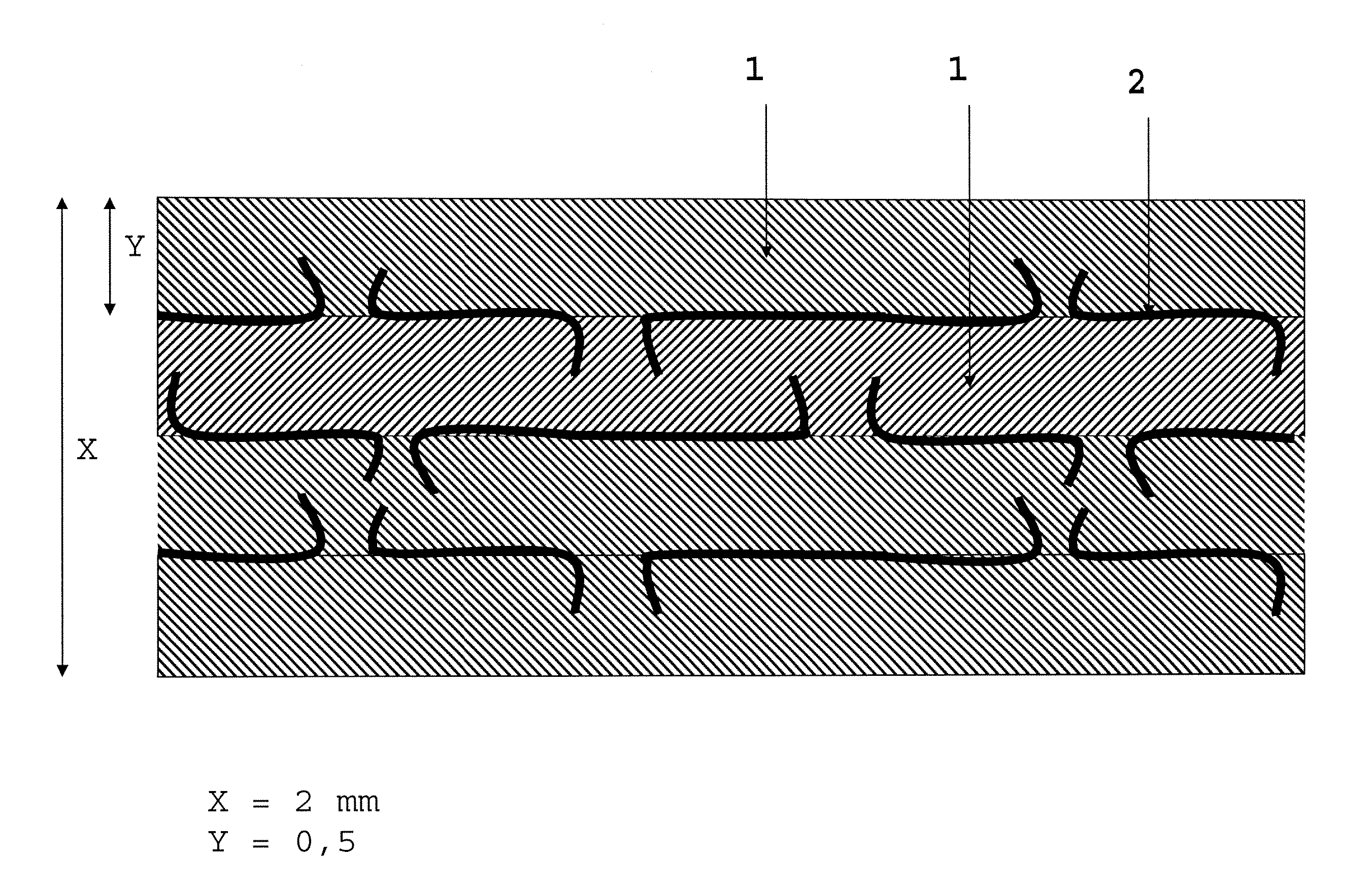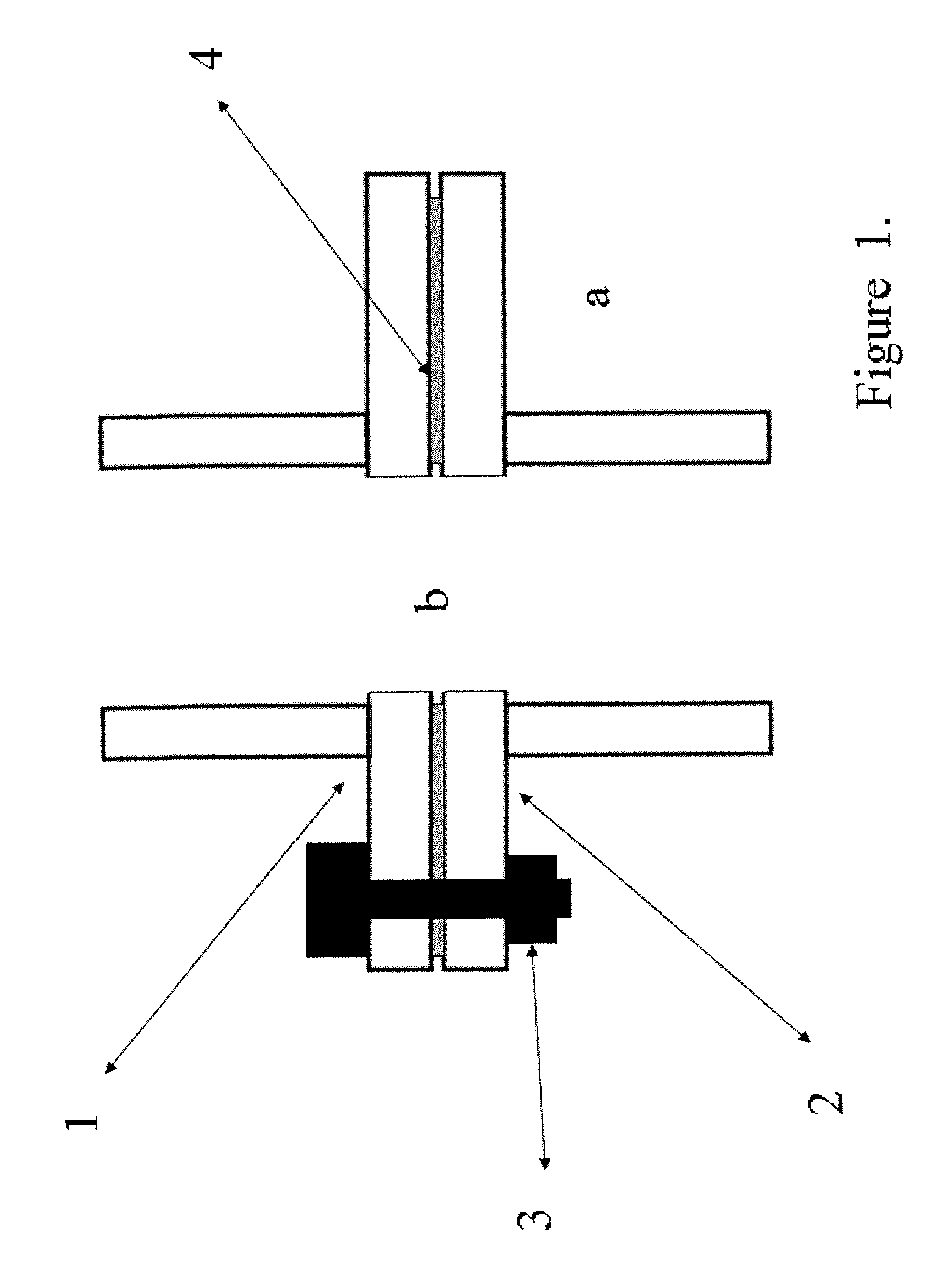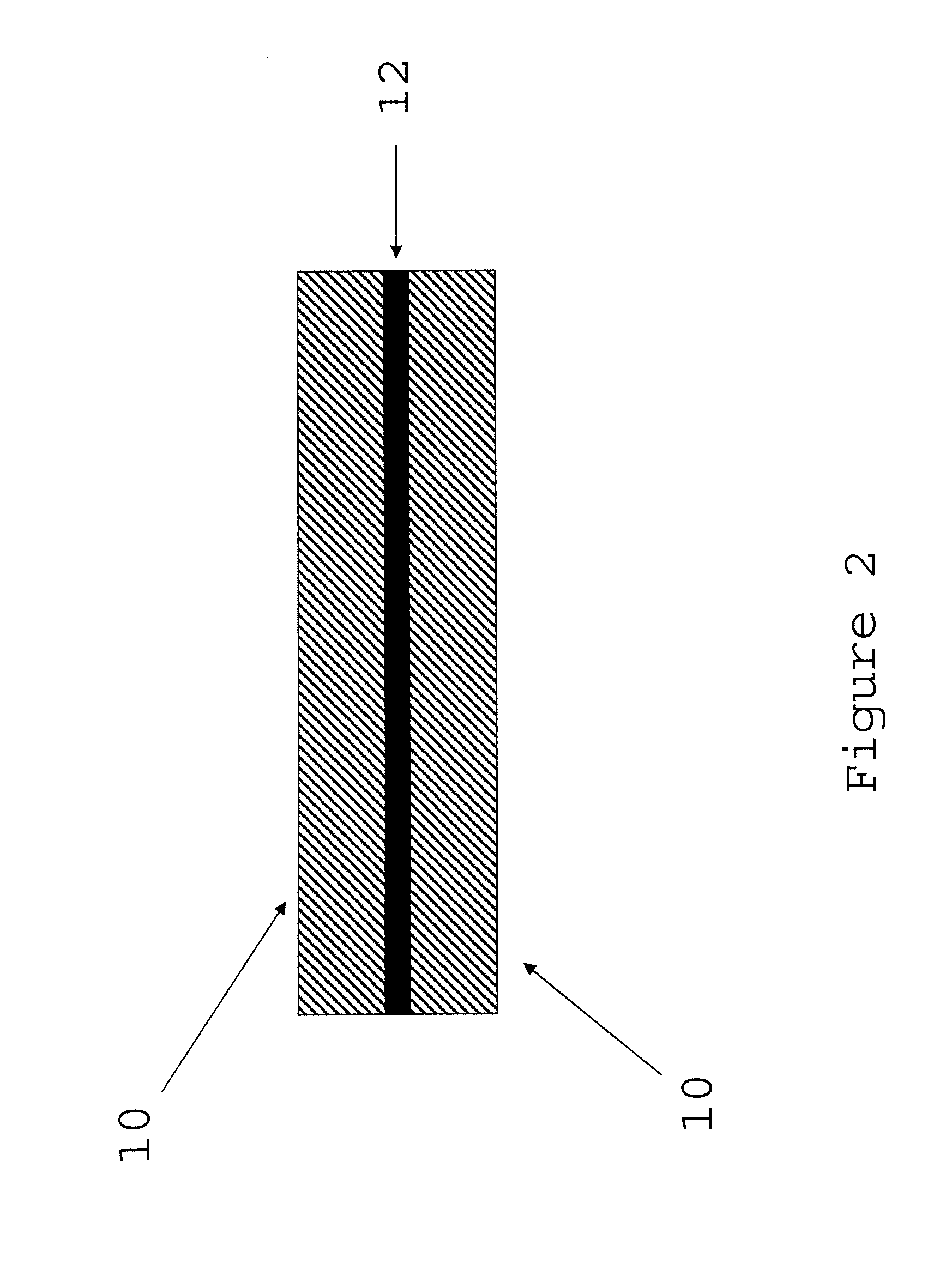Flexible graphite/metal multilayer gaskets suited to high-temperature service conditions
a multi-layer, graphite/metal technology, applied in the direction of sealing, natural mineral layered products, other domestic articles, etc., can solve the problems of difficult to produce gaskets in heavy thicknesses, difficult to handle, and relatively easy to tear, so as to facilitate the cutting of gaskets
- Summary
- Abstract
- Description
- Claims
- Application Information
AI Technical Summary
Benefits of technology
Problems solved by technology
Method used
Image
Examples
example 1
[0070]A composite plate was made by alternately stacking four flexible graphite foils produced by the Carbone Lorraine Corporation, Papyex® 1600° grade, with a density of 1 g / cm3, a thickness of 0.5 mm (foils supplied in rolls of 1 m in width and 300 m in length), and three stainless steel foils, grade 316, with a thickness of 50 micrometers, perforations via 1.2 mm diameter, evenly distributed holes with a density of 4 perforations per cm2, and a height of the spurs resulting from the perforations of 650 micrometers above the plane of the foils (1 m wide and 300 mm long foils supplied in reels). The final thickness of the gasket is 2 mm.
[0071]After the gasket has been kept at 550° C. for 48 hours, under a prestressing of 20 MPa, the measurement of the maximum permissible stress QSmax at 550° C. yields a value close to 200 MPa, according to the standard EN 13555.
example 2
[0072]A composite plate was made by alternately stacking four flexible graphite foils produced by the Carbone Lorraine Corporation, Papyex® 1980 grade, with a density of 1 g / cm3, a thickness of 0.5 mm (foils supplied in rolls of 1 m in width and 300 m in length), and three stainless steel foils, grade 316, with a thickness of 50 micrometers, perforations via 1.2 mm diameter, evenly distributed holes with a density of 4 perforations per cm2, and a height of the spurs resulting from the perforations of 650 micrometers above the plane of the foils (1 m wide and 300 mm long foils supplied in reels). These steel foils are coated on both sides with a 5 μm thickness of nitrile rubber.
[0073]Composite plates have been made via continuous roll-bonding of seven layers (4 layers of flexible graphite, 3 perforated metal layers), with a total thickness of approximately 2 mm. At the end of the roll-bonding operation, the products are kept flat and cut into plates measuring 1 m×1 m.
[0074]Some of th...
example 3
[0087]Conventional multilayer structures (such as: Sigraflex Select and HD, or Papyex® HP) do not further make it possible to combine a seal conforming to the standard VDI 2440 (TA Luft), with a mechanical strength at high temperatures such as this and high mechanical performance, without the addition of a metal ring sealing off the internal section of the gasket, as described in U.S. Pat. No 6,962,349, which is incorporated herein by reference in its entirety.
[0088]The gasket being cut to size from the plate by the user does not then make it possible to guarantee the leakage level for the cut-out gasket that is required by regulations, without mastering the method of adding the ring.
[0089]However, it can be noted that the structure according to the present invention, combined with using the metal ring, makes it possible to obtain results conforming to the standard VDI 2440 (TA Luft), even without the addition of functionalizing agents, and this is so despite the fact that all of th...
PUM
| Property | Measurement | Unit |
|---|---|---|
| thickness | aaaaa | aaaaa |
| diameter | aaaaa | aaaaa |
| diameter | aaaaa | aaaaa |
Abstract
Description
Claims
Application Information
 Login to View More
Login to View More - R&D
- Intellectual Property
- Life Sciences
- Materials
- Tech Scout
- Unparalleled Data Quality
- Higher Quality Content
- 60% Fewer Hallucinations
Browse by: Latest US Patents, China's latest patents, Technical Efficacy Thesaurus, Application Domain, Technology Topic, Popular Technical Reports.
© 2025 PatSnap. All rights reserved.Legal|Privacy policy|Modern Slavery Act Transparency Statement|Sitemap|About US| Contact US: help@patsnap.com



